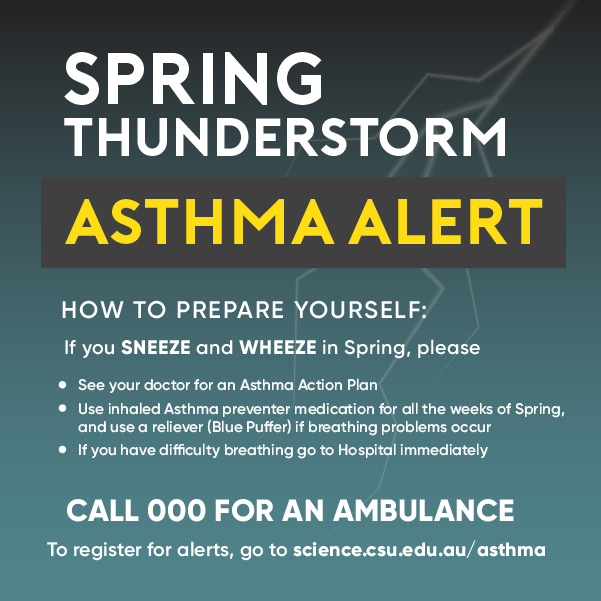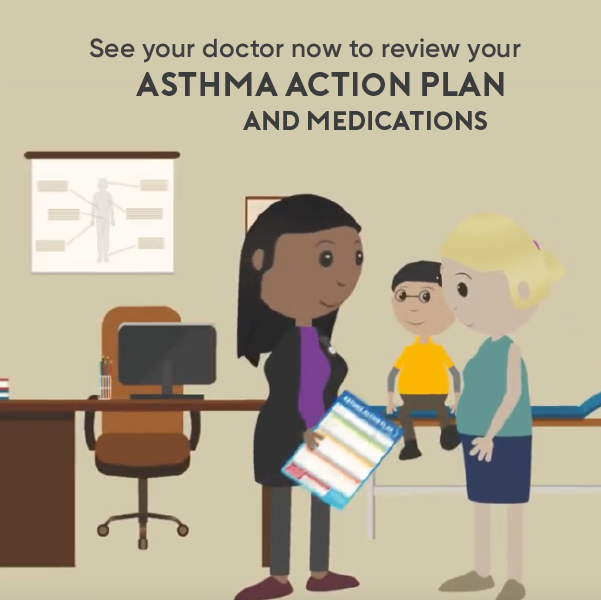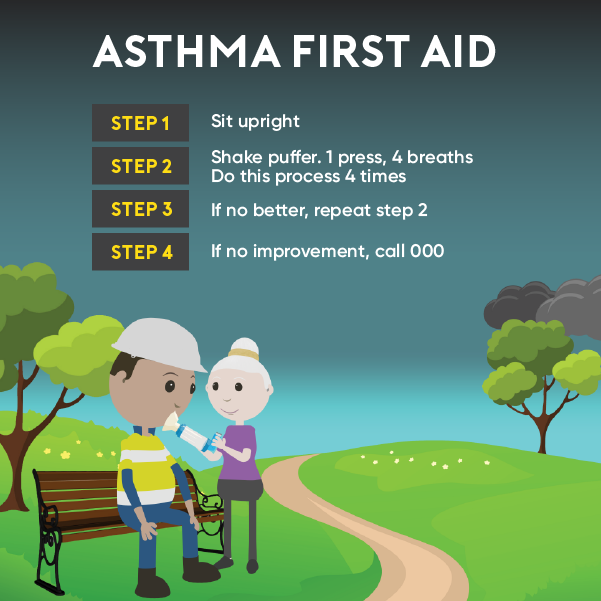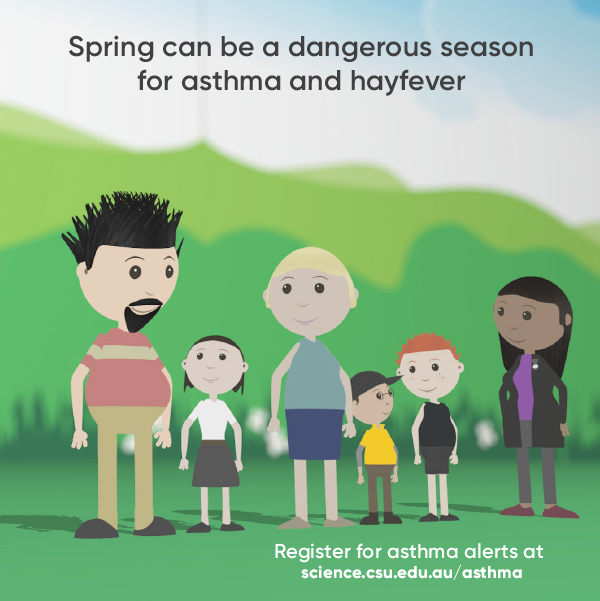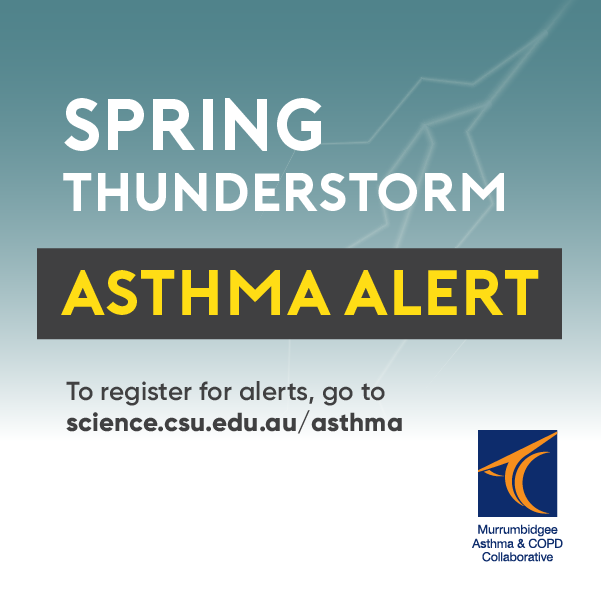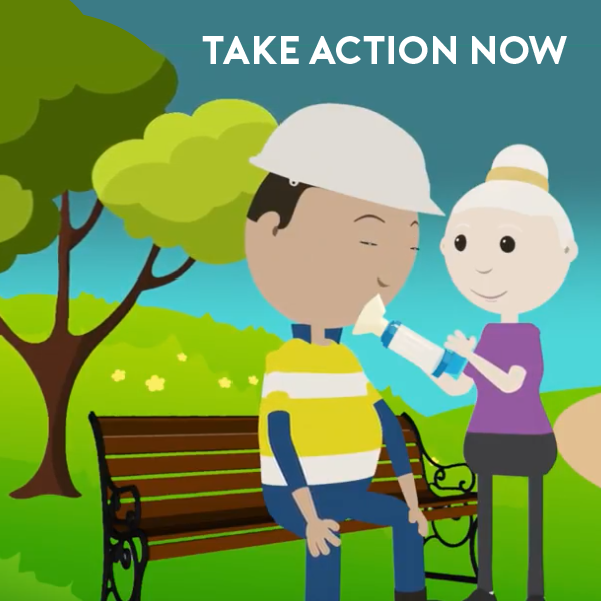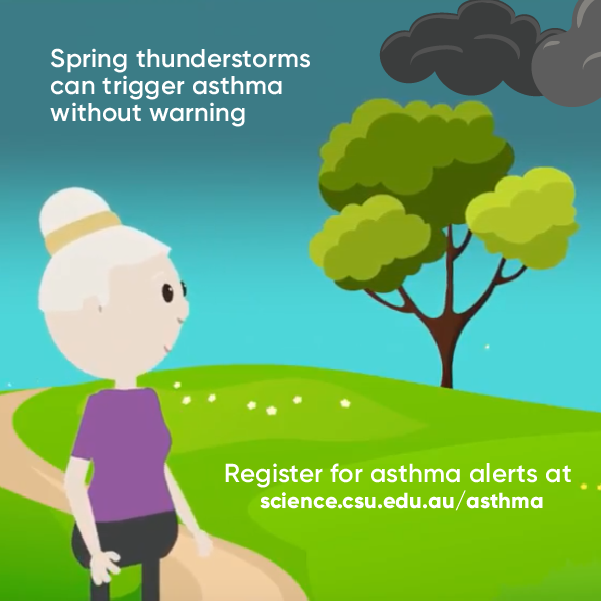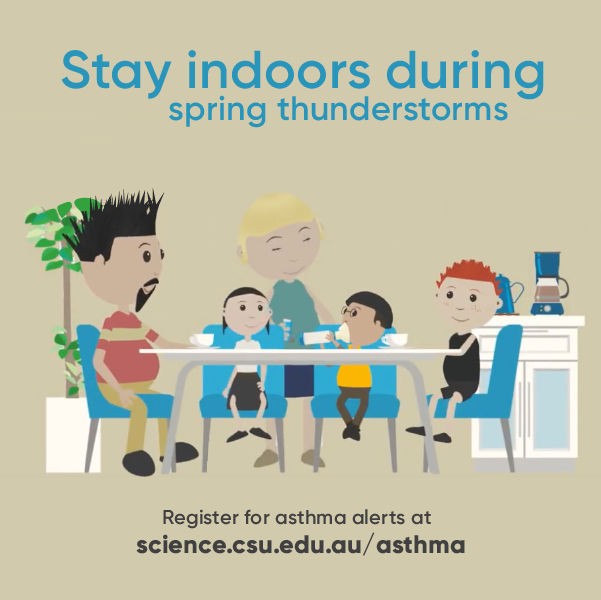Spring Thunderstorm Asthma – Building Safer Communities
People in the Murrumbidgee area who have breathing difficulties related to asthma and hay fever need to prepare now for the start of the spring thunderstorm season, advises Murrumbidgee Asthma Collaborative.
This year’s spring thunderstorm asthma campaign was launched today at Charles Sturt University (CSU).
Murrumbidgee Local Health District (MLHD) Clinical Nurse Consultant for Asthma and Respiratory, Robyn Paton, said asthma flare-ups traditionally increase in spring throughout the Murrumbidgee due to high pollen counts, in conjunction with thunderstorm-related weather conditions.
“The devastating thunderstorm asthma epidemic in Melbourne in November 2016, and epidemics that have occurred in the Riverina, are evidence of the dangers the weather can pose at this time,” Mrs Paton said.
“Colds and flu, wheezing and sneezing, have been in abundance over the winter months. Mix these conditions with elevated levels of pollen and the typical thunderstorms during the late spring, and we may be at risk of experiencing another epidemic of respiratory-related conditions such as asthma flare-ups,” she said.
Ms Paton said the key message for people who wheeze and sneeze when preparing for spring is to visit their GP or specialist for an assessment, obtain a current medication prescription and a written Asthma Action Plan and then to use them.
People experiencing asthma symptoms need to use preventer medication each day plus reliever medication, such as Ventolin, if they have breathing problems. If they have hay fever and sinus problems these conditions also need to be discussed with their doctor to determine appropriate treatment.
“If breathing difficulties continue after taking a reliever medication, it is essential to seek medical help immediately,” Mrs Paton said.
Murrumbidgee Primary Health Network (MPHN) CEO Melissa Neal said the longstanding partnership between MLHD, CSU and MPHN has resulted in ongoing awareness of the elevated risk during this time of year for people with asthma and encouraged them to visit their GP in readiness for the season.
The annual spring thunderstorm asthma campaign is promoted by the Murrumbidgee Asthma Collaborative which includes representatives from MLHD, MPHN, Wagga Wagga Base Hospital (WWBH), CSU, Asthma Foundation NSW, Ambulance NSW and interested community groups.
This year Burkard’s Pollen traps have been purchased with the generosity of CSU and Asthma Australia. Several students from CSU and Kildare will be trained to assist with the pollen counts as part of their science programs.
Note: there is an online register for people to receive alerts via email and/or SMS when thunderstorm asthma risk is elevated, by registering at science.csu.edu.au/asthma

